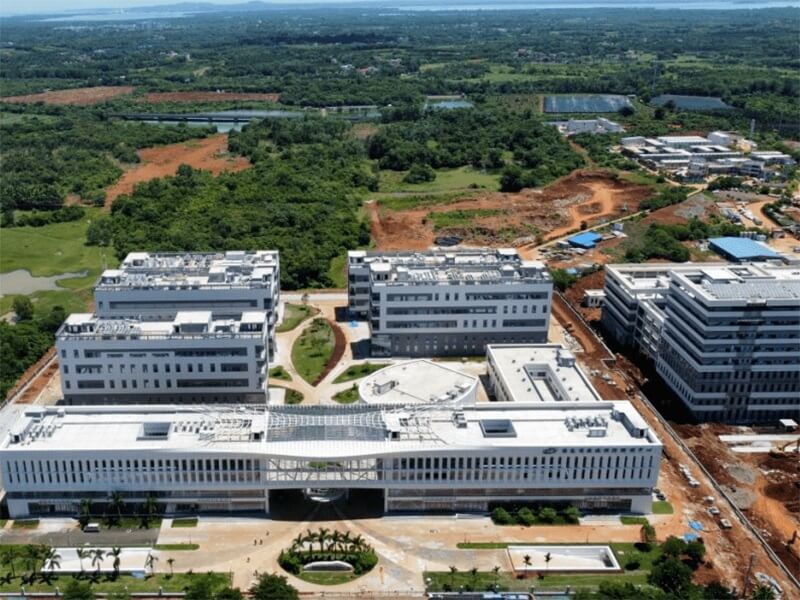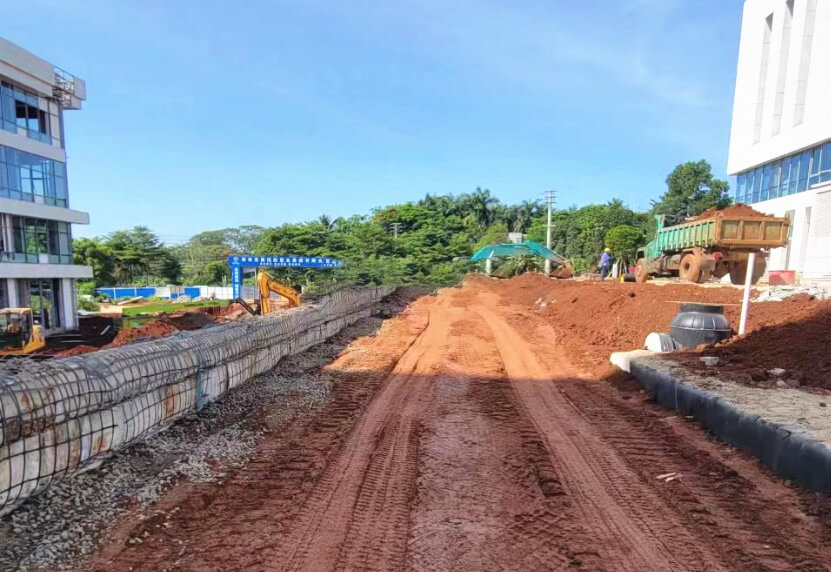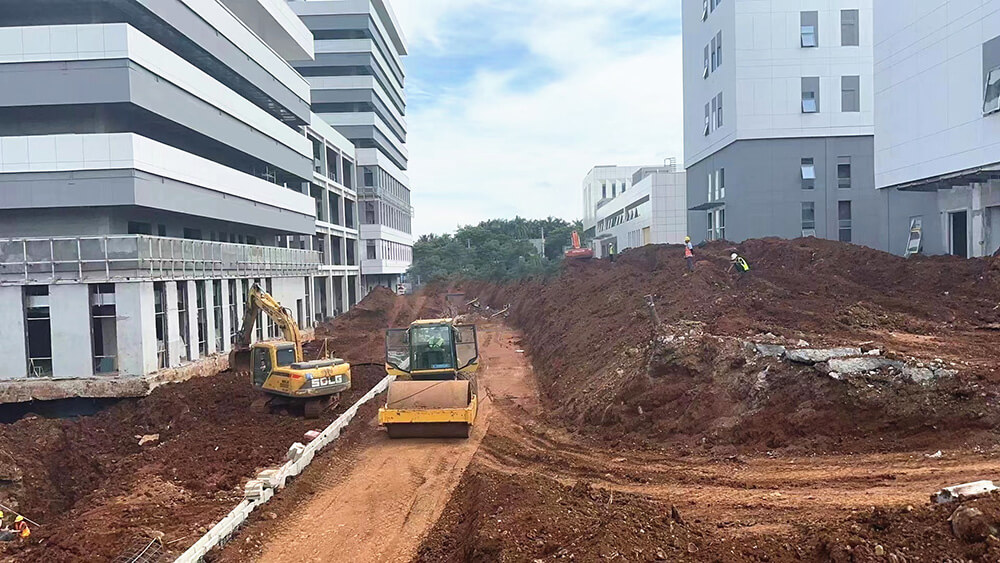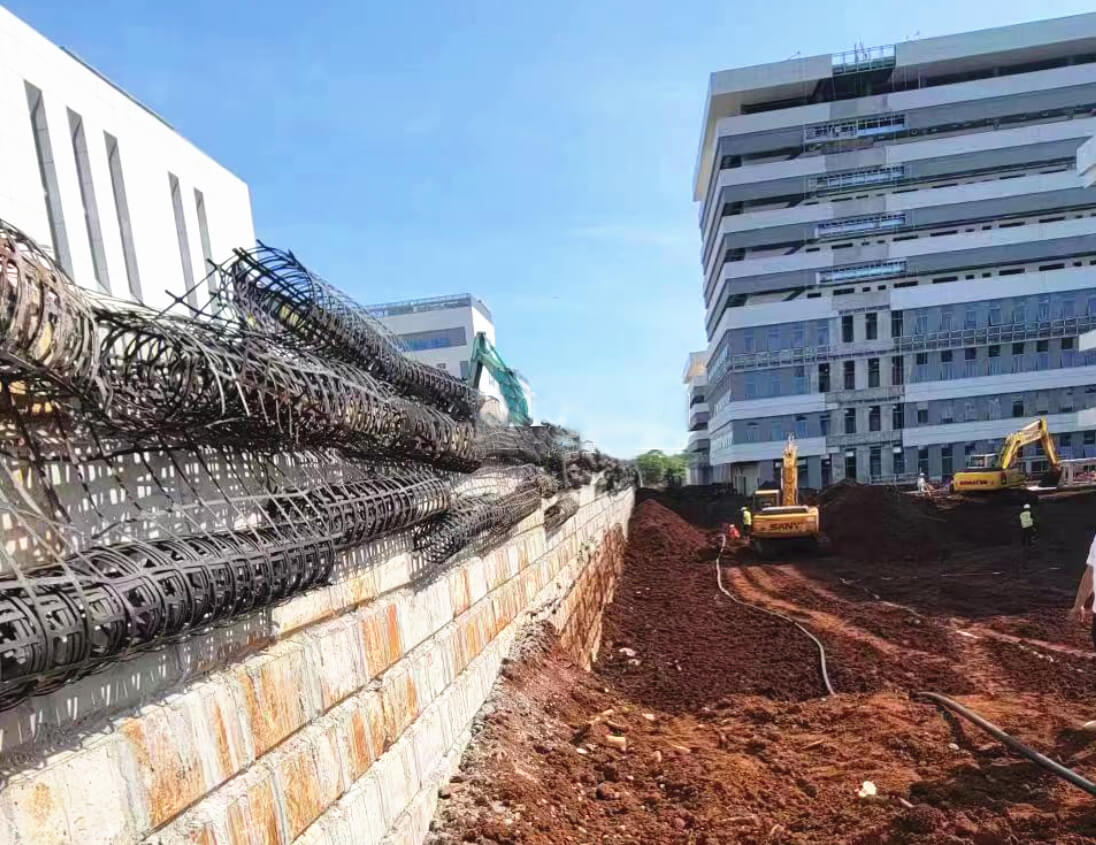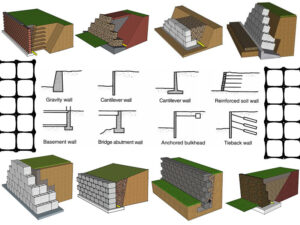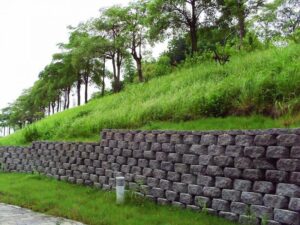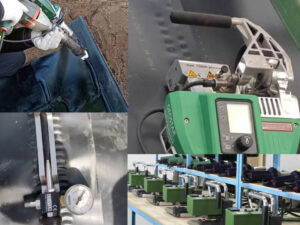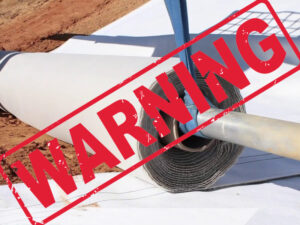The total area of a certain disease prevention and control center is 207,100 square meters, the total construction area is 148,300 square meters, and the total investment is 183.4 million US dollars.
Project construction scale and main construction content: The total construction area of the project is 60,817.98 square meters, of which the above-ground construction area is 47,603.98 square meters and the underground construction area is 13,214 square meters.
Engineering problems to be solved
The west side of this project has a design elevation of 17.1m-19.2m, and the east side has a design elevation of 13.8m-14.2m, which will form a 3-5m high and 200m long fill retaining wall.
The retaining wall is generally southwest-northeast oriented, the base stratum is silty clay, the characteristic bearing capacity value is 150KPa, and the base is relatively weak.
Because it is an internal retaining wall of the site, there are certain requirements for the aesthetics of the wall. A pedestrian staircase is considered in the middle of the retaining wall to meet the requirements of personnel activities between sites.
Reinforced retaining wall solutions
The proposed retaining wall is about 200m long and 4.0-6.0m high.
Combined with the actual situation of this project, after comparing multiple schemes, the design adopts the Y-type prefabricated module panel reinforced earth retaining wall scheme. When the bearing capacity of the local foundation is insufficient, the reinforced cushion layer is replaced.
The step-by-step retaining wall method is adopted at the pedestrian staircase, and the pedestrian staircase position is prefabricated.
1. Retaining wall design conditions
The design service life of the reinforced earth retaining wall is 50 years, and the overall stability safety factor Fs is designed to be ≥1.35.
The earthquake fortification intensity is 6 degrees, which belongs to the general earthquake resistance area.
The tensile calculation adjustment coefficient of the reinforced material is 1.55, and the tensile performance sub-item coefficient is calculated as 1.25.
2. Retaining wall foundation design scheme
Because the foundation is relatively weak, the base is excavated first to remove the surface covering miscellaneous fill, and the silty clay is used as the bearing layer. A 1.0-meter-deep cast-in-place reinforced concrete strip foundation is excavated.
Because the existing ground is a slope, the retaining wall foundation is excavated in sections into steps.
3. Section of reinforced earth retaining wall
The retaining wall involved in this project is designed in accordance with the terrain and relevant structural requirements of this project. A single-step reinforced earth retaining wall (a pedestrian staircase is set on the second step in some places) is designed. The single-step height is 3~6 meters, the wall surface is vertical, and the spacing between the reinforced material layers is 0.4 meters.
A crushed stone filter layer is set behind the wall surface, a horizontal crushed stone drainage layer is set at the bottom of the wall, and a drainage ditch is set on the top of the wall.
4. Design load of reinforced earth retaining wall
According to relevant information, the road on the top of the reinforced earth wall is considered to be Class A according to local industry standards.
Structural requirements for reinforced earth retaining walls
The reinforcement material is an integral steel-plastic geogrid, which adopts an integral forming process and a steel-plastic composite material. The main force-bearing element of the rib belt is the high-strength cold-drawn steel wire in the strip, which has extremely small creep.
The polyethylene protective layer after anti-aging treatment has the chemical properties of acid, alkali, and salt corrosion resistance, small elongation at break, and high strength.
The separation force of the intersection of the strips is required to be greater than 500N.
The design mechanics and physical size indicators must meet the standard requirements of the transportation industry.
1. The reinforced body filler is required to be backfilled with on-site excavation and abandoned squares, and the comprehensive internal friction angle is not less than 30 degrees. The filler in contact with the reinforced material is not allowed to have sharp edges to avoid damaging the reinforced material.
The filler is rolled in layers, and the compaction degree in the reinforced body area and outside the reinforced body is required to be not less than 93%.
2. The retaining wall surface design adopts a Y-shaped prefabricated module, which is anchored with the integral steel-plastic geogrid.
3. The foundation and top of the reinforced earth retaining wall require cast-in-place C30 reinforced concrete.
4. Waterproof and drainage measures should be taken at the top and rear of the reinforced earth retaining wall to prevent water accumulation in the retaining wall.
5. Small machinery should be used near the wall to reduce the vertical spacing and compact in layers.
Project achievements
1. Y-shaped prefabricated modules are used to meet the landscape requirements of the project.
2. Vertical retaining structures are used to meet the needs of site use and maximize construction land.
3. Reinforced earth retaining wall design scheme is adopted to reduce the requirements of retaining walls on the bearing capacity of the foundation. At the same time, the flexible reinforced earth structure can adapt to larger foundation deformation, reduce large-scale excavation of retaining wall foundations, and save foundation treatment costs.

